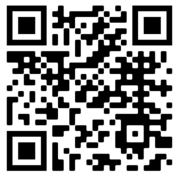Code-based differential technique is done by locking onto the pseudo-random code for a given satellite and measuring the time difference between transmit and receive time to determine the satellite range. The code measurement is an absolute range measurement, which provides a value of the true range between the satellite and the receiver, after removal of clock errors and other sources of error. As an absolute measurement, it is relatively easy to utilize DGNSS for your code-measuring needs.
SiReNT Technology
SiReNT users need only one receiver to carry out DGPS or RTK positioning in real-time. Real-time SiReNT correction data in RTCM 2.3/3.1/3.2 and CMR formats can be received from the internet using the NTRIP protocol.
For users who prefer to post process their data, SiReNT supports it with reference station data ready for download from our website in RINEX v2.10, RINEX v2.11 or RINEX v3.02 formats.
SiReNT
Features

No need for your own base station

Achieve positioning, navigation and tracking info relative to international references

Achieve time and resource efficiency and cost reduction

Reducing dependence on hardware and manpower.

Data accuracy and reliability
SiReNT utilizes Differential GNSS (DGNSS) technique to enhance the accuracy of stand-alone GNSS positioning to provide precise and accurate data for your positioning needs.
The technique involves the simultaneous operation of two GNSS receivers, one that's stationary with known coordinates (reference station) and another that's roving around making position measurements (roving user). At the reference stations, DGNSS correction data is calculated and transmitted to the roving user. The autonomous GNSS positioning accuracy of 5 to 10 metres can be greatly improved to mere centimetres in real-time using the DGNSS technique.
With the DGNSS technique, two types of measurements are available for your selection: Code and Carrier-phase DGNSS measurements.

In the RTK technique, a known reference station broadcasts correction messages to a roving receiver.
Each roving receiver uses its own carrier phase measurements, together with the correction messages received from the reference station, to solve the integers of carrier phase cycles in real-time within the receiver. The process of solving the integers is known as the "initialisation" and the result obtained is an accurate position of the roving receiver, relative to the reference station, for your usage.

Network Differential Techniques are done by estimating significant portions of ionospheric, tropospheric and ephemeris errors over regions and sending them out to rovers in the field. This technique is highly accurate and with short observation time, making it an effective technique for your positioning and surveying needs.
Using the Trimble Pivot Platform at the Data Control Centre (DCC) which supports the Virtual Reference Station (VRS) technique, continuous computation of the following parameters by analyzing double difference carrier observations are made. Using these parameters, Pivot will provide all GNSS data and interpolate to match the position of the rover. Matching the rover’s position provides a very short baseline, which reduces systematic errors considerably and thus provide data with greater accuracy for your navigation needs.

Errors

Errors

Errors

for L1 and L2.
The SiReNT servers consist of advanced hardware running the latest GNSS server software and applications to provide a multi-purpose capability to the SiReNT infrastructure. These servers, which make up the Data Control Centre (DCC), are hosted securely in SLA thus allowing SiReNT to provide a reliable and secure platform for your every need.
GNSS raw data captured at each reference station will be transmitted directly to the SiReNT DCC where it will be processed, archived and be ready for dissemination to users.

The data dissemination of SiReNT is supported through the SiReNT website (for post-processing applications) and NTRIP (for real-time applications). Data in RINEX v2.10, RINEX v2.11 or RINEX v3.02 can be generated from the website under the PP On-demand service. You would be able to generate up to 12 months of data from the SiReNT website. Data older than 12 months will be archived and you can access them in the SiReNT Archive Data service. For real-time applications of RTK and DGNSS services, you will be connected to our server through wireless internet (3G,4G,etc.).

SiReNT adopts Network Transport of RTCM with Internet Protocol for the real-time dissemination of RTK and DGNSS connections for several reasons:
-It is an application-level protocol used for streaming GNSS data over the Internet.
-It is a generic, stateless protocol based on the Hypertext Transfer Protocol HTTP/1.1
-It is an open, non-proprietary protocol.
-It allows simultaneous PC, laptop, PDA or GNSS receiver connections to a broadcasting host.
-It supports wireless Internet access through Mobile IP Networks such as 3G, 4G,LTE etc.
-It allows you to manage your rovers through the use of registered usernames and passwords.
More information on NTRIP can be found in Networked Transport of RTCM through Internet Protocol (NTRIP) by German Federal Agency for Cartography and Geodesy (BKG).






